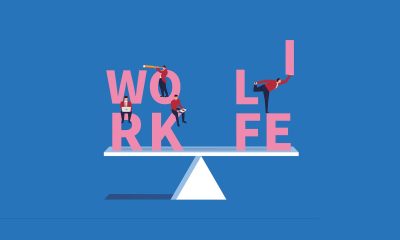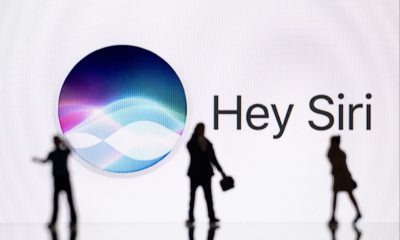Side Hustles
Giving My Product Away for Free Was One of the Best Business Decisions I Made — Here’s Why.

Entrepreneur
My first business was an accident.
When I was in college in the late ’90s, I built a membership website for a student organization. It was a lot like Facebook, but pre-dated Mark Zuckerberg’s efforts by a few years. I released it as an open-source product — and it became a huge hit. It was so successful that, even though it was free, people started offering to pay me for it, requesting customizations and features so they could use it for their sites.
There’s a lot of debate about whether you should give your product away for free. Over on the Startups sub on Reddit, opinions are mixed. “In general, ‘free’ may sound like something good, but you always reduce the perceived quality of something if you give something out for free,” writes one user.
I disagree. I think giving your product away, at least in a limited capacity, is one of the best things you can do for your business. Here’s why.
Related: 5 Ways Your Business Stands to Benefit From Offering a Free Product or Service
Non-customers can try it out
People love free things. Behavioral economist and author of the book Predictably Irrational: The Hidden Forces That Shape Our Decisions Dan Ariely demonstrated this in a popular experiment in which he offered up a Lindt truffle for one cent, and a Hershey Kiss for free. Even though the truffle was unequivocally the superior chocolate, the majority of people chose the Hershey Kiss instead. This experiment makes an important point: Free is the lowest barrier to entry.
There are several methods of attracting customers by offering up your product for free, which typically involves letting them get a taste of what you’ve made before they commit to paying. One option is a free trial, which entails making the product available for a limited time or a set number of uses before requiring payment. Another is the “freemium” model, which gives users access to a basic version for free, with the opportunity to upgrade to a paid version that offers more features.
Creating a “try before you buy” experience is one of the best ways to net new customers. However, converting free users to paid ones isn’t always easy — as Harvard Business Review notes, “when customers anchor on free, it can be hard to dislodge them.” The authors’ research found that one strategy is to offer multiple versions of a product or service. With two options, customers may stick to the free versions. But with various options, they’ll often choose the middle “compromise” one, feeling as though they’re settling for a reasonable middle ground.
Depending on how you’re structuring your offerings, though, the reality is that you only need a small fraction of conversions to be successful. My company, Jotform, has 200,000 customers who pay for our products on a monthly or yearly basis — that’s just one percent of the 20 million people who have registered in the last 17 years. Even so, it’s enough that we’ve reached 100 million free monthly active users.
Related: How to Make Big Bucks While Selling Your Products for Free
It builds confidence in your product
Following the massive success of the open-source product I released in college, I decided to take the same approach with Jotform. For the first year of its existence, our online form builders were completely free.
The benefits of this system were twofold. The first was that it gave Jotform the opportunity to develop a user base without spending a dime on marketing. The second was that I was able to collect feedback and improve what needed to be fixed. I agree wholeheartedly with speaker and author Brian Tracy, who has written about the immense value of testing products with customers, advising entrepreneurs to “go to a potential customer with your sample or prototype and ask if he would buy it … Then ask him how much he’d pay for this product. If people criticize your new product idea, ask them why. Ask how the product could be modified to make it more attractive.”
Believe me, the first iteration of our product was not perfect, and I am glad I had the chance to address those early issues before releasing a paid version the following year. By the time we released the first premium form builder in 2007, I felt confident that it was worth the fee we were asking people to pay. Customers, too, could see that we’d made adjustments and tweaks based on their input, which added to Jotform’s legitimacy.
Our initial premium version cost $9, which was low enough that we still did consulting work and customized modifications to the software we sold. It was slow going, as bootstrapping often is. But the important thing was that with each iteration, our numbers steadily grew.
There’s a lot of debate about the potential hazards of giving your product away for free. For me, it’s all part of my low-risk approach to entrepreneurship. Offering your product up without asking for anything in return not only builds a customer base, it gives you the chance to get feedback and make adjustments before the stakes become too high.
Read the full article here

-

 Investing6 days ago
Investing6 days agoAre You Missing These Hidden Warning Signs When Hiring?
-

 Investing3 days ago
Investing3 days agoThis All-Access Pass to Learning Is Now $20 for Black Friday
-

 Passive Income3 days ago
Passive Income3 days agoHow to Create a Routine That Balances Rest and Business Success
-

 Make Money6 days ago
Make Money6 days ago7 Common Things You Should Never Buy New
-

 Side Hustles4 days ago
Side Hustles4 days agoApple Prepares a New AI-Powered Siri to Compete With ChatGPT
-

 Side Hustles5 days ago
Side Hustles5 days agoMIT Gives Free Tuition For Families Earning $200,000 or Less
-

 Passive Income4 days ago
Passive Income4 days agoCustomers Want More Than Just a Product — Here’s How to Keep Up
-

 Investing6 days ago
Investing6 days agoGoogle faces call from DuckDuckGo for new EU probes into tech rule compliance By Reuters



















